
Tag: SDGs
ARREST WARRANT #ClimateCriminal
This is embarrassing, I’m issuing an arrest warrant for Tony Page and Louise Gibbon for unlawfully submitting Reading’s New Local Plan to proceed to adoption with adopted main modifications.
“Over 200 towns and cities in the UK have in 2019 declared #climateemergency!
Climate Change Centre Reading – CCCRdg just had it confirmed, that #Reading’s New Local Plan #NLP (2016-2036) final modifications are based on #NPPF2012 not #NPPF2018 #NPPF2019!!!
Final report over Reading New Local Plan 2017-36 / Adopted Main Modifications;
Why the hell is this the case?? It’s a complete scam. After years of consultations on #climatechange. Proposals, advice and objections identifying the most important neighbourhood planning and policy issues facing our society which have been ignored.
All planning climate criminals in the SEPT committee #RBC should be h-d. I’m sorry for the wording, but that is exactly how I feel.
I refuse to believe team Tony Page and partner in crime Louise Gibbon are that stupid, idiots to go against #science.
I expect a written apology to the residents of Reading, on how to completely revamp the Reading New Local Plan to be fit for future.
It’s totally unbelievable that the SEPT committee (RBC) are trying to get away with the New Local Plan proceed to adoption in accordance with a pre-climate framework and 5 years old sustainability appraisals (these are being consulted on now).
Can someone please explain how this can happen in 2019. Can anyone with legal skills stop this coupe at this very final stage.
What is needed before is an honest re-assessed New Local Plan in accordance with an up-to-date planning framework and the new sustainability appraisals assessments, BEFORE it proceed to adoption!
Further on, four requirements of the New Local Plan must be synergised with;
- – The RBC internal climate emergency toolkit
- – The Sustainable Development Goals and Agenda 2030
- – The global New Urban Agenda, SDG 11
Finally the Local Plan must be risk assessed to prove disaster resilience.
Everything is inter-connected #SDGs
Everything is inter-connected
What is sustainability? It is changing all the time.
The global SDGs are at the moment the leading scheme for sustainability.
To a greener, leaner and healthier community.
https://www.un.org/sustainabledevelopment/
https://sustainabledevelopment.un.org/
Localisation of the SDGs in cities and towns are part of the 2030Agenda
17 goals and 169 targets
Delivering the Goals – https://tvb-climatechallenge.org.uk/wp-content/uploads/2019/10/British-Concerns-Hidden-by-the-UK-Brexit-negotiations.pdf
Our questions to Wokingham Borough Council (WBC) is, Where are WBC on addressing the SDGs and rolling out it’s 169 targets in a public campaign in Wokingham and greater Berkshire to all its local residents? How will civil society support the enhanced implementation plan of ‘the Goals‘ in their local community?
The commitment to which the Government signed up in September 2015, the UK Government is firmly committed to delivering the Goals. Greener Wokingham could take a lead on this.
UK’s Voluntary National Review process and progress of the #SDGs
The “meaningful” Brexit vote
In the backwater of the #Brexit#BrexitVote is a stupid #BrexitDeal because sovereignty holding back Earth from the future. #StopBrexit #PeoplesVote #Zombieholocaust #Instability #12years

CCCRdg’s Contribution to the UK’s Voluntary National Review process and progress of the Sustainable Development Goals
While, The UN’s stark warning on the IPCC 1.5C degrees report that we have 12 years left to limit climate catastrophe was preceded by countless extreme weather events and swiftly followed by the worrying finding that over half of vertebrates species globally have been killed off in less than 50 years. The urgency of the crisis we are facing could not be clearer.
Please see our SDGs paper and case study
In everyone’s interest
—
Thanks,
Climate Change Centre Reading
You can find out more about the Sustainable Development Goals on:
- www.gov.uk/sustainabledevelopmentgoals
- www.sustainabledevelopment-uk.github.io
- www.sustainabledevelopment.un.org/sdgs
- www.globalgoals.org
#DRR Disaster Risk Reduction – #DutytoProtect
Africa – Americas – Arab States – Asia & Pacific – Central Asia – Europe
When all the ice has melted, first I will be Warm and then I will be Cold.
Stay up-to-date with the analysis and outcomes of Disaster Risk Reduction and International Law Symposium 2017 by our Reading blog posts.
#ClimateChance #ClimateChance2017 #Agadir #COP22 #COP23 #ONG #Climat #Humanrights
1 #DRR Disaster Risk Reduction – “#Duty-to-Protect”
Disaster law initiatives to combat climate change – “Duty-to-Protect”
How to grapple with the increasing frequency and severity of a wide array of both ‘human-made’ and ‘natural’ disasters.
Experts say we have three years to save the planet
International law must comply by 2020 latest with national #disasterlaw
Under Sendai Framework priority 2 – Strengthening disaster risk governance to manage disaster risk (Duty to protect);
Global and regional levels
28. To achieve this, it is important:
(a) To guide action at the regional level through agreed regional and sub-regional strategies and mechanisms for cooperation for disaster risk reduction, as appropriate, in the light of the present Framework, in order to foster more efficient planning, create common information systems and exchange good practices and programmes for cooperation and capacity development, in particular to address common and trans-boundary disaster risks;
Are disaster management services the main duty-bearers to roll out DRR?
Break down legal fragment between DRR, Climate adaptation, the Tree proposal, Sendai framework, the SDGs, also between nuclear regulations.
Land use and forestry proposal for 2021-2030 – Forest laws to reduce deforestation.
National framework regulations needed now in;
- Land use and urban planning
- Building codes – Retrofits of existing buildings, Exemplary new buildings and Efficient equipment
- Environment and resource management
- Safety standards
Connect DRR and climate change, after New Zeeland 2010 Building code demolish or rescue.
2011 International convention from prevention of pollution from ships.
Mexico mainstreamed DRR law in all sectors. France mayor sent to prison for ignoring DDR laws.
Civil protection law = Disaster management (law to much focus on response)
Sectoral laws like Climate change adoption laws and development approvals important in rural and sub-urban areas. Linkage between environment laws and climate change laws.
Why do we need a lawyer? Protection of rights links to disaster
Legal disaster
Customs law disaster
Why compulsion and force?
Why international? Paragraph 14 Cooperation legal and not
Consent Capacity Building (ILC) framework adopted 2 months after Sendai 2018 next
Legislation/Regulations Is it a Self form of disaster risk reduction DRR?
Can monitoring DRR indicators alone identify (urban/rural) hazards and exercise disaster relief law of public response?
Disaster Ill-star
1950-60 Defense did research on disaster
Values scope and scale of a loss
Volition choices in relation to hazards
Valocity policies response times’ project, risk, predict – time horizon
Vicinity geography also social cultural economic, legal overlays
Vulnerabilities = impact outcome (origin)
Viewpoints philosophy
Victims disaster label, response label (victim-hood)
Katrina –> Depress obsess –> Super dome
Victims vs. Cash / Charity patterns
Natural more emo than man-made disaster
2003 August heatwave 14 802 (living on climbing 7th floor) – Time frame Chernobyl 100 (1 000 cancer)
Does climate legislation and regulation protect Who is an (urban/rural) disaster victim, healthy/sick people?
Core DRR mitigation and prevention response to disasters and hazards – linked to relief union
1st November 1755 Lisbon earthquake 1/3 loss – Urbanisation important
Voltaire unforeseeable and random – Urbanisation important
1927 National Relief Union
Preventive measures against disasters
UN early warning systems – Iran earth quake 1963
Pollution Sustainable Development
1980 Prevention Natural Disaster Reduction
1992 Rio declaration
UNFCCC – Framework Climate Change
Kyoto protocol
1991 Resolution 46182
Yokohama Framework
Millennium change
Climate change, Human rights, Environment law
Sendai
PREVENTION at activities and measures to avoid existing and new disaster risks.
MITIGATION de-licensing or minimizing of impact of hazardous events.
PREPARDENESS capacity developed by governments responds and recover organisation, community or individuals to effectively anticipate respond to and recover from the impact of likely or imminent or current disasters.
Commentary
Early Warning Systems
SARC-agreement
The obligation of recording casualties is not an instrument of to reflect disaster victims
Urban Disaster Law
Duty is a conduct and not a result, to shall reduce risk of disaster and harm precaused thereby.
The U.?N. Human Rights Council adopted the resolution, which was submitted by the Brazilian and Ecuadorian governments, last month at its headquarters in Geneva. Diplomats say the document could now lay the groundwork for more cities-focused work by the council –>
GOOD NEWS Adopted resolution #L30 – 37th Meeting, 35th Session Human Rights Council http://webtv.un.org/watch/ahrc35l.30rev.1-vote-item3-37th-meeting-35th-regular-session-human-rights-council/548071109600
Can the Sendai framework be enforced? Is there a will to extend the new international treaties within the domestic jurisdiction?
Exploring accountability, implementation and enforcement in the Sendai framework
States have a disaster law impact on human rights not only in their own territories. Also, often there is an extraterritorial disaster law impact – on people in the rest of the world.
This project aims to provide a critical evaluation of the law and policy of whether and to what extent disaster law vs. human rights law is and should be applicable to states extraterritoriality.
When forced climate migrants decide to make perilous border crossings: the causal role of disaster
Themes:
Climate Change, Community-based DRR, Education & School Safety, Environment & Ecosystems, Gender, Health & Health Facilities, Disaster Risk Management, Critical Infrastructure, Vulnerable Populations, Children and Youth
#ClimateChance #CCAgadir17 #Cities #EUSEW17 #c40cities #NUA #NAU #CCCRdg #Habitat3 #Humanrights
#SendaiFramework #Switch2Sendai #Policy #Governance
#Cities #Safety #Arctic #Maritime
#UCEEP
#HumanRights
#DRRplanning
#REinsurance
#Implementation
#EWS #EarlyWarningSystems
#Hazards
#Federation Disaster Law Programme
#RedCross #Oilspills #ocean #ships #environment
#Disasterlaw #UrbanDisasterLaw
#law #disaster #risk #reduction
Planners – White LED Blue Light and its effect on Humans and Wildlife Habitat
WORLDWIDE LED RESPONSIBILITY
Light affects our health and well-being in many ways. White LED’s with blue-rich spectra are being rolled out over the country at an alarming pace, often without proper health or environmental impact assessments. These white LED’s are detrimental to human and wildlife circadian rhythms as well as the view of our night sky. 1,2,3 , Urgent action is needed to ensure installation of LED lights use a warm-white Correlated Colour Temperature (CCT) ideally 2700K for the benefit of Public Health, Ecology, Road Safety, and Sky Glow.
“Lighting planners and policymakers in local government nowadays need to be very careful in choosing the light class as low as possible, in order to avoid unnecessary over sizing, in using Constant Light Output for luminaires, avoiding cold temperature of LEDs and, above all, seizing the importance of using lighting control systems. The good thing about LEDs is that you can dim and switch on/off easily, and this raises the importance of sensors.”~#Alan2016
There are currently very few solutions that successfully combine an understanding of the physiological effects of light with efficiency and aesthetics. Recently, a number of governmental and non-governmental organisations have provided interesting publications which should be taken into consideration to help ensure benign, safe, and pleasant lighting in our outdoor environment. 4,5,6
The American Planning Association (APA) recommends outdoor LED lighting exclude wavelengths below 500 nanometers. The International Dark Sky Association (IDA) recommends a CCT of maximum 3000K to minimise sky glow and the American Medical Association (AMA) has issued guidelines recommending that blue-rich light is reduced as far as possible in order to protect Public Health.
The American Planning Association (APA) recommends outdoor LED lighting exclude wavelengths below 500 nanometers. 5 The International Dark Sky Association (IDA) recommends a CCT of maximum 3000K to minimise sky glow and the American Medical Association (AMA) has issued guidelines recommending that blue-rich light is reduced as far as possible in order to protect Public Health. 7,8,9,10 In the UK, Public Health England are recommending that councils use a warm colour temperature for street lights to miminise glare and discomfort. 4 Unfortunately, street lighting is currently exempt from the UK nuisance regulations which limit the effects of light and noise on people. Due to a lack of clear guidelines from Central Government, notably the Department for Transport, councils often opt for blue-rich white LED street lights, thus increasing light pollution.
An example may be taken from the situation on the Isle of Wight, where high CCT LED outdoor lighting has been installed, and there was little or no public consultation nor any trials prior to implementation. 11 Reading Borough Council is currently planning to install streetlights with a CCT of 4000K, which is above the recommended level of 2700K, despite awareness of Public Health England having advised otherwise. 12 In contrast, best practice of lighting implementation can be found in Cardiff and Westminster Council. In 2014, the Campaign to Protect Rural England (CPRE) sent out a survey which collected responses from over 80 local authorities. CPRE has published a document which provides 9 key recommendations based on this evidence and other evidence directly collected by CPRE. 6
The scientific understanding on the visual and non-visual effects of light forms a strong basis of the recommendations to minimise glare and to minimise spectral intensity below 500nm from artificial night time light.1,2,3,13,14,15,16
In 2014, the Campaign to Protect Rural England (CPRE) sent out a survey which collected responses from over 80 local authorities. CPRE has published a document which provides key recommendations based on this evidence and other evidence directly collected by CPRE:
“It should be clear to planners that outdoor lighting has a multitude of often detrimental effects on the built and natural environments as well as on our health. If existing standards are not adjusted to account for the spectral characteristics of the LED lighting being created and promoted by the lighting industry today, we could, ironically, be faced with higher levels of light pollution, glare, and overlighting…The choice is clear: we can use responsible standards to guide lighting design, or we can continue to allow uncontrolled lighting to degrade our quality of life and negatively impact human health and ecology. Planners have important roles to play in making the former scenario a reality in their communities.” – Bob Parks, APA 5
“Local authorities should give careful consideration to the type of LED lighting they use and consider the potential impacts that higher temperature blue rich lighting has on ecology and on human health… New street lighting should be tested ‘in situ’ before a lighting scheme is rolled out across a wider area to ensure that it is the minimum required for the task and does not cause a nuisance to residents.” – Emma Marington, CPRE 6
The scientific understanding on the visual and non-visual effects of light forms a strong basis of the recommendations to minimise glare and to minimise spectral intensity below 500nm from artificial night time light.
“A National Policy to curb blue-rich light pollution is urgently required”~
– Ms Tanja Rebel and Mr Enrico Petrucco, Reading UK
All references have been provided as free, full access, internet-accessible sources wherever possible.
- http://dx.doi.org/10.1371/journal.pone.0067798
- http://www.dynamics.org/~altenber/PROJECTS/MAUI/STARRY_NIGHTS/ARTICLES/Falchi+Cinzano++Haim_limiting.2011.pdf
- http://www.johanneroby.net/uploads/3/0/8/8/30887717/lptmm2015-manage-roby.pdf
- Public Health England, http://www.lightmare.org/docs/PHE-CIBSE-SLL_LED_report_May2016HRLBL-b.pdf
- APA, http://volt.org/wp-content/uploads/2014/09/PAS-Memo_MayJune2014_cr.pdf
- CPRE, http://www.cpre.org.uk/resources/countryside/dark-skies/item/download/3497
- IDA, http://bit.ly/28L65Us
- IDA guide, http://darksky.org/lighting/led-practical-guide
- AMA, http://bit.ly/1XZzsz3
- AMA statement, http://www.ama-assn.org/ama/pub/news/news/2016/2016-06-14-community-guidance-street-lighting.page
- https://isleofwight.greenparty.org.uk/files/IsleOfWight/Street-lighting-are-we-in-the-dark.pdf
- http://www.reading.gov.uk/media/5523/Item-1A/pdf/Item01A.pdf
- http://www.sps.ch/en/articles/various-articles/ueber-den-einfluss-des-lichtes-auf-den-menschen/lighting-application-for-non-visual-effects-of-light
- http://m.pnas.org/content/112/4/1232.full
- http://advances.sciencemag.org/content/2/6/e1600377.full
- http://www.sciencedirect.com/science/article/pii/S0022407313004792
Regional Government of Andalusia [PDF]
DECLARATION ON THE USE OF BLUE-RICH WHITE LIGHT SOURCES FOR NIGHTTIME LIGHTING
Additional Internet Links and Public Opinion:
http://bizled.co.in/bright-bluish-white-leds-disrupt-sleep-says-us-medical-body
http://www.iac.es/adjuntos/otpc/International_Declaration_on_Blue-Rich_Light.pdf
http://www.concordmonitor.com/s-2985214
http://spie.org/newsroom/technical-articles/1015-led-light-pollution
http://www.getreading.co.uk/news/reading-berkshire-news/tilehurst-dog-walker-says-new-11220460
http://www.flagstaffdarkskies.org/for-wonks/lamp-spectrum-light-pollution
http://uk.businessinsider.com/astronaut-photos-light-polution-led-nasa-esa-2015-8
ICLEI Updates From Surabaya At HABITATIII #H3PrepCom3
here is an overview of 27 july and early hours of 28 July
1- Side event of ICLEI and University Tekniki Malaysia, focusing on advancing sustainability of Asian cities and regions effectively reflected the diversity of topic in the region through its multinational (Malaysia, S. Korea, Japan, Indonesia, Germany, India), multilevel (local, regional, national governments), multistakeholder (governments at all level – research and academia – finance partners) structure. Mr. Datuk HJ. Mohammad Bin Mentek, Secretary General of Malaysian Ministry of Urban Wellbeing, Housing and Local Government and Head of Malaysian Delegfation at HabitatIII PrepCom3 in Surabaya also delivered a warm and encouraging closing remark, congratulating all partners and inviting an active collaboration in the preparation of World Urban Forum9 in Kuala Lumpur, Malaysia in February 2018.
2- Around midday, Co-Facilitators circulated a revised version of draft NUA as of 27 July. The text had revised paragraphs except para.8 (related to Right to the City) and Section C Follow-u and Review (as Eu and Colombia noted that informal informals had not reached a conclusion yet.) After brief exchanges, Co-facilitators announced to reconvene at 17:00
3- At the plenary of Main Committee at 17:00, many Member States expressed frustration and dissapointment on the process, in particular lack of clarity on how to close agreed paragraphs, reflection of already communicated texts and next steps. While some delegations expressed general views, some delegations continue to submit new and additional textual proposals. The discussions also started to focus on the way forward between Surabaya and Quito as it became clear that the draft will not be adopted in Surabaya. Meanwhile no new text was communicated on Section.C
4- In the early hours of the morning, Co-Facilitators convened the plenary, suggested to circulate a new text in the next hour in their personal capacity taking into account the views and results of Section C informals and invited delegations to consider an informal informal in New York City at UN HQ in early September. There were no objection to this proposal.
5- Around 02:30 on 28 July, Secretariat 2 documents; draft report of the Main Committee (negotiations on draft NUA) and draft report of the PrepCom3.
6- Around 03:30 on 28 July, first Main Committee and then PrepCom3 Plenary convened and adopted the circulated documents, with subject to further updates by the Rappertouer as appropriate. Meanwhile, Joan Clos in its capacity as the Secretary of the Conference announced new webportal to announce Quito Action Plan and invited all stakeholders to upload their commitments. During the closing remarks, delegations expressed appreciations to Co-Facilitators, Indonesia government as well as people and Mayor of Surabaya.
7- The PrepCom3 concluded at 04:30 on 28 July Thursday.
7- It has to be noted that altough para.12 of the UNGA Resolution 70/210 (Rules of Procedures of Prep Com) reinvited Bureau of PrepCom3 to circulate a draft outcome document at least 6 months before the Conference, neither the Report of the Main Committee nor the prepCom3 Report included any reference to any official document with appropriate documentation number. The Conference website were uploaded with link to documents of 6 May, 18 June and 18 July, without any official document number.
8- As of 28 July 14:00 Indonesia time, the Conference website did not contain any link to the Report of the Main Committee nor any draft text as of 27 July. https://www.habitat3.org/prepcom3/papersmart
9- Around 10:00 on 28 July Thursday, the H3 Secretariat circulated a new draft NUA as of 28 July. The text is attached. It has to be noted that the document contains no information whether this is a product of Co-facilitators. The version as of 28 July contained significant changes to version as of 27 July, including a string dedicated paragaraph 7 in the Declaration recognizing 2nd local and regional governments and their 2nd World Assembly. There are some significant changed in other sections and a totally new Section C Follow-up and Review is also included which seemed to be a convergence document between version as of 18 july and proposals of EU presented on 26 July, containing numerous brackets as well as 2 options in para.164 regarding options the wwqy forward for strengthening UNhabitat. The reference to an International Multistakeholder Panel on Sustainable Urbanization, the only innovative outcome expected to be announced as n outcome/legacy of H3 remained in the version of as of 18 july was also removed in this version 28 July.
10- It may be possible to expect an informal informal meeting to be convened in NYC at UN HQ in the first week of September.
Here is a brief coverage of 26 July Tuesday
1- In the morning, Co-facilitators met with stakeholders. GTF speakers highlighted the need to engage local and regional governments appropriately in the implementation as well as follow-up and review.
2- At the Plenary, stakeholders delivered their official statements. Intervention of local and regional governments was delivered by Maimunah Mohd Sharif, Municipal President, Municipal Council Of Seberang Perai, Malaysia; President, Malaysian Association of Local Authorities (MALA); Member, ICLEI Global Executive Committee. Follow the links to reach the text and video of the intervention.
3- Follow the link to access the ppt of ICLEI session at Urban Speakers Corner.
4- The main committee continued hearings from Member States for their inputs to Declaratiuon, Section A Commitments, B- Means of Implmentation. The committee reconvened at 19:30 to focus on section C Follow up and review. The African Union reiterated its position for the strengthening of UNhabitat and its new mandate for the New urban Agenda. US and EU reiterated their wish to focus on the substance of NUA at H3 and continue discussions on its further follow up and review in connection with the 2030 Agenda for Sustainable Development as well as UN General Assembly related process. Specific and substantial textual proposals were presented by the EU. G77/China responded with a positive spirit for a convergence on main subjects.
5- Informal informal negotiations continue over the night, including a stocktaking plenary by Co-Facilitators at 03:30. G77, EU, US reported about progress achieved so far and asked for additional time. Co-facilitators proposed to reconvene the plenary at 11.00 on 27 July wednesday and commit to share a revised version of the sections on Declaration, Sections A and B and results from the informal informals from Section C on follow and review.
Things to follow on 27 July Wednesday
1- A partial calendar of official negotiation sessions is available on conference homepage
2- Main committee is planned to reconvene at 11:00.
2- ICLEI and Universiti Tekniki Malaysia will host their joint side event “Advancing Sustainability of Asian Cities and Regions” at 13:30 at Crystal Room:4, including speakers from Seberang Perai, Seoul Metropolitan Government and Iskender Regional Authority. Citynet will convene another side event at the same time at Crystal Room:1
3- Timing of closing plenary will be announced during the day based on the progress achieved in the negotiations. General Assembly of Partners will convene at 1830 and throughout the day an additional session of Co-Facilitators with stakeholders may be scheduled.
Here is a summary of 25 July Monday
1- PrepCom3 agreed on modalities and agenda of H3 in Quito,
2- Chile representative assigned as the Acting Co-Chair in Surabaya in place of Ecuador,
3- Plenary started to hear general comments from Parties, no time left for Stakeholder interventions, will continue on Tuesday
4- Main Committee established to conduct informals on draft outcome, held its first session, started hearing views of parties on the Declaration, but suspended the session upon request of G77/China, will re-convene on Tuesday.
5- UCLG launched GTF publication summarizing H3 journey at Urban Speakers Corner
6- Cities Alliance side event convened at lunch time
7- City of Surabaya hosted cultural event (personally speaking, this was the best organization i had ever attended at an intergovernmental conference since 2002, hats-off to Mayor and People of City of Surabaya)
8- A very inspiring article is published at Citiscope by Ulrich Graute on UN negotiations and engaging local governments. Another important coverage by Gregg Scruggs is also available. Another Op-Ed is released by Nicola Paula at ENB prior to the start of the Surabaya
and things to look for 26 July Tuesday
1- an informal daily programme of negotiations is released at H3 PrepCom3 homepage, that contains a partial coverage of all event.
2- Plenary for statements will start at 10:00 at level:3 (expected to offer slots for Mayor Groups and Other Stakeholders), main committee will start at 10:00 at level:4
3- GAP Prep meeting will convene at 08:30 at level:4, Co-facilitators will meet with Major Groups and Other Stakeholders at 09:00 at level:4
4- Transport Day will convene at Hotel Sheraton between 13:00 – 17:00. ICLEI member City of Johannesburg will share updates on Johannesburg Ecomobility Festival held in September 2015 at the closing plenary.
5- At the lunch time, WRI will convene its side event
6- ICLEI will host a session at Urban Speakers Corner at Exhibit area at the ground floor at 15:30. Speakers areMaimunah Mohd Sharif, Municipal President, Municipal Council Of Seberang Perai, Malaysia; President, Malaysian Association of Local Authorities (MALA); Member, ICLEI Global Executive Committee and Emani Kumar, Regional Director, ICLEI South Asia Secretariat; Deputy Secretary General, ICLEI World Secretariat. Title is “Globalizing Integrated Transformative Actions to Ensure Sustainability of the Urban World 2030”
6- At 19:30, Plenary Meeting of the General Assembly of Partners will convene at Crystal Room
/YUNUS ARIKAN
Source: ICLEI
#Goal13 City Levels Green, Amber or even Red
#Goal13. Take urgent action to combat climate change and its impacts
The highly developed industrialized nations’ responsibility to combat climate change is obvious and cannot be overestimated. Similar to the issue of sustainable consumption and production patterns, the rich countries need to become leading examples if the goal of combating climate change and its consequences is not to remain mere lip service. Effectively reducing CO2 and other greenhouse gas emissions is imperative in this regard. The data displayed in figures 13.1 and 13.2 show how far many OECD countries are still lagging behind compared to the respective benchmark countries of the sample.
Click on the picture to enlarge
Figure 13.1 provides information on production-based CO2 emissions per capita. “Production-based” means that emissions refer to gross direct CO2 emissions from fossil fuel combustion, emitted within the national territory excluding bunkers, sinks, and indirect effects. In the fi ve leading countries, Mexico, Turkey, Sweden, Portugal, and Hungary, as well as in sixth-ranked Chile, production based CO2 emissions are below 5 tons per capita. These countries’ performances stand in stark contrast to the respective emission levels of countries placed at the bottom of the list, such as Canada, the United States, Australia, and Luxembourg. Here, CO2 emissions range from 15.3 (Canada) to 19.47 tons per capita (Luxembourg).
Click on the picture to enlarge
The second snapshot indicator links emission levels to the size of a country’s economy, and refers to total greenhouse gas emissions per GDP. Greenhouse gas emissions include land use, land-use change, and forestry, and are measured in CO2 equivalents as a percentage of GDP (tons per million constant 2005 int. USD PPP). The findings are remarkable: While Sweden is by far the top-performing country with an amount of 66.75 tons, Estonia comes in last place with 680 tons – more than ten times as much as in the case of the leading country. Moreover, Sweden is the only country ranked among the top five on both indicators chosen here.
With regard to greenhouse gas emissions per GDP, Norway, Switzerland, Finland, and France follow in places two to five. In fifth-ranked France, however, emissions are already nearly four times as high as in Sweden. At the negative end of the spectrum, Canada and Australia again find themselves in the bottom group. Australia’s greenhouse gas emissions per GDP amount to 641 tons, which means that the country ranks second to last on both indicators of goal 13.
Prague to host the United Nations’ European Habitat Conference #habitat3
Climate Change Centre Reading, is honored to participate at the UN regional meeting European Habitat Conference as a climate advocate for natural weather shelter / protection of #urbanthinkers. The conference will take place in the Prague Congress Centre, Prague, Czech Republic between March 16 to 18, 2016
Habitat III Europe Regional Meeting “European Habitat” will involve a wide range of participants, that will debate regional priorities for the New Urban Agenda, and policy recommendations in the form of a final regional participants’ declaration. The “European Habitat”, is an international regional conference organised within the framework of the United Nations Economic Commission for Europe (UNECE). It is one of five regional commissions of the United Nations, bringing together 56 member countries from Europe, the Balkans, North America and a part of Asia. The event is an official part of preparations for the third global UN Conference on Housing and Sustainable Urban Development “Habitat III”. Based on a decision of the UN General Assembly adopted in December 2014, this conference should be held in Ecuador in October 2016. The event is being prepared by the UN Human Settlements Programme (UN-Habitat). UNO regional conferences are organised by individual regional economic commissions – and it is UNECE that covers the 56 above mentioned member countries (UNECE Member States).
In this regard, “European Habitat” will gather recommendations reflecting the consensus reached at the regional level on sustainable housing and other topics from the spectrum of a proposed New #UrbanAgenda.
Join us at this exciting opportunity to discuss the challenges of Sustainable “Housing in Liveable Cities”.
In the process towards a New Urban Agenda, Habitat III Europe Regional Meeting “European Habitat” will discuss how to ensure access to decent, adequate, affordable and healthy housing for all, with due attention to reducing the impact of the housing sector on the environment. Final declaration from “European Habitat” will be considered official inputs to the Habitat III process. Join us at this exciting opportunity to discuss the challenges of Sustainable Housing in Liveable Cities.
The official outcome of the European Habitat conference will be the Prague Declaration whose draft was discussed in December 2015 at the plenary session of the UNECE Committee on Housing and Land Management, the UNECE executive body for housing and urban development. In October 2014, the Committee discussed and adopted the Geneva UN Charter on Sustainable Housing, which was then approved by UNECE’s Plenary in April 2015 as the official contribution of the relevant region to the Habitat III conference. The Geneva UN Charter on Sustainable Housing is an essential strategic document which the Prague Declaration develops further. The European Habitat is one of the first UN implementing conferences reflecting the goals of UN post-2015 Development Agenda.
Final “Prague Declaration” from “European Habitat” will be considered official inputs to the Habitat III process.
The #UN European Habitat Conference, is part of the roadmap to #Habitat3 in QUITO – OCTOBER 2016.
#TheWorldWeWant #TheCityWeNeed #Futureofplaces #Placemaking #SDG13 #SDGs #FutureofPlaces #COP21 #COP22 #Habitat3 #NewUrbanAgenda #PublicSpace #WUC #TheFutureWeWant #TheCityWeNeed #UrbanSDG #UrbanAction #UrbanThinkers #Youngplacemakers #ClimateAction #OpenSpace
Background
Based on a decision of the UN General Assembly, the city of Quito, Ecuador, will host the third global UN Conference on Housing and Sustainable Urban Development (the “Habitat III conference”) from 17 to 20 October, 2016. These summits take place every twenty years; the first one was organised in June 1976 in Vancouver, Canada, the second summit “Habitat II” took place in June 1996 in Istanbul, Turkey.
The official outcome of the Habitat III summit will be the adoption of the discussed document (New Urban Agenda), responding to development in urban areas, with respect to the ever increasing share of the world’s population living in towns and cities (by 2050 the share will be 70%).
Preparations for the Habitat III summit are carried out according to the procedure approved by UN General Assembly; the process is managed by the Steering Committee of Habitat III.
(UN–Habitat) is the United Nations agency for human settlements and sustainable urban development. It was established in 1978 as an outcome of the First UN Conference on Human Settlements and Sustainable Urban Development (Habitat I) held in Vancouver, Canada in 1976. UN-Habitat maintains its headquarters at the United Nations Office at Nairobi, Kenya. It is mandated by the United Nations General Assembly to promote socially and environmentally sustainable towns and cities with the goal of providing adequate shelter for all. It is a member of the United Nations Development Group. The mandate of UN-Habitat derives from the Habitat Agenda, adopted by the United Nations Conference on Human Settlements (Habitat II) in Istanbul, Turkey, in 1996. The twin goals of the Habitat Agenda are adequate shelter for all and the development of sustainable human settlements in an urbanizing world.
Invitation Boroughs of Buckinghamshire, Oxfordshire and Berkshire
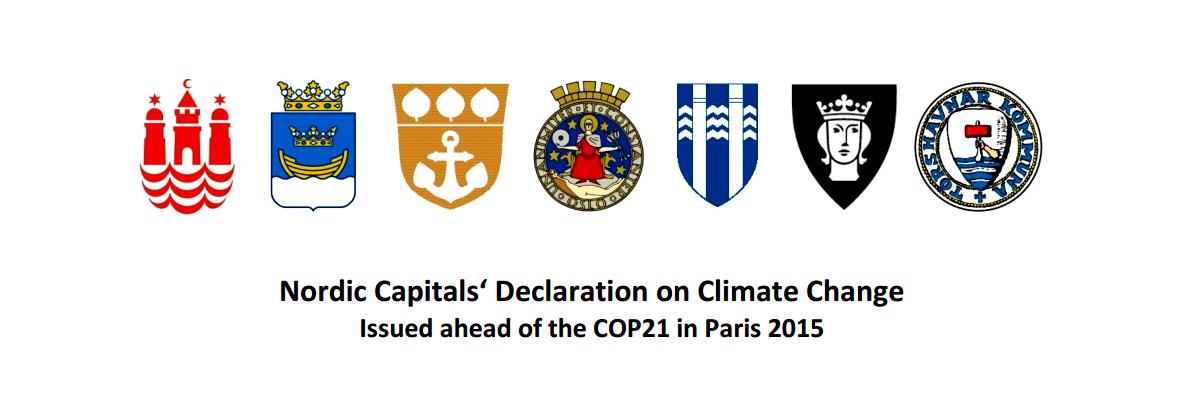 Invitation to BOBShire’s Capitals‘ Declaration on #ClimateChange 2017
Invitation to BOBShire’s Capitals‘ Declaration on #ClimateChange 2017
Venue and programme for the workshop need to be set,
Pre-register interest here, BOBShire @ CCCRdg .org .uk
Join the wave of change. Sign the Appel de Paris here, http://www.parispledgeforaction.org/read
Project ideas emerged from breakout groups for each of the following #RE100 challenges:
- How to include quality of life (the social dimension) in climate-oriented city solutions
- How to create incentives for people to choose to be ”climate smart” in their everyday choices
- How to create city climate targets, measure progress and engage more actors
- How to remove barriers that enable cities to implement more (and better) testbeds
Check back for more information
/Climate Change Centre Reading
Source: reykjavik.is



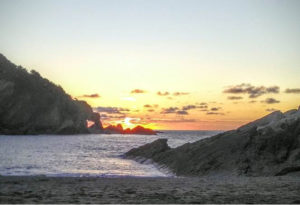
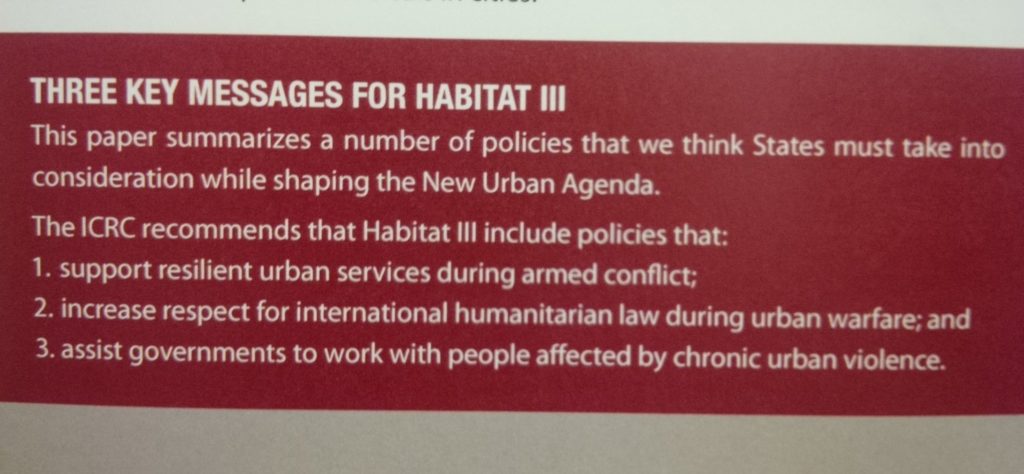
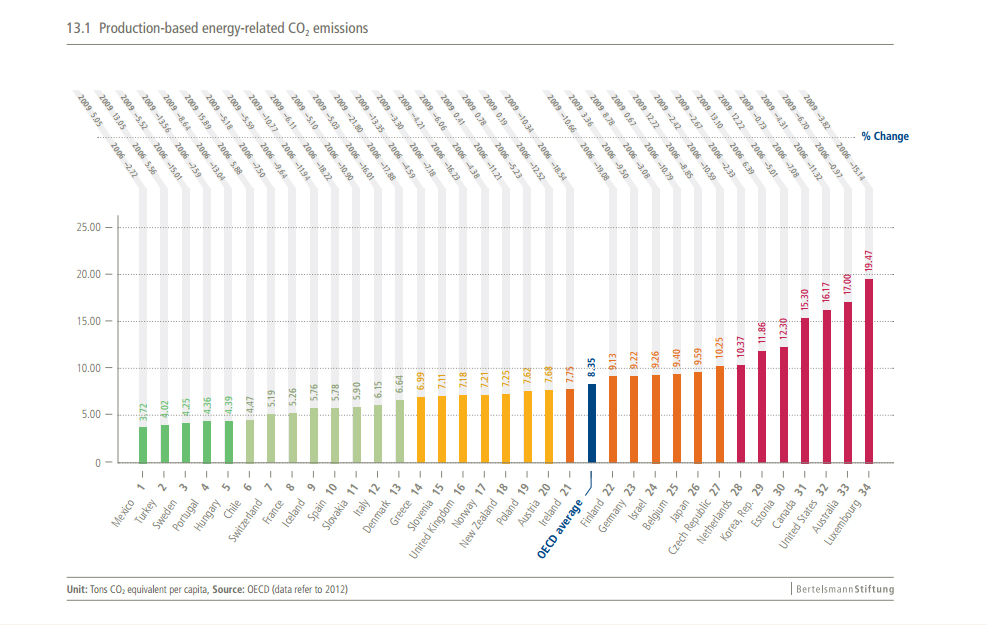
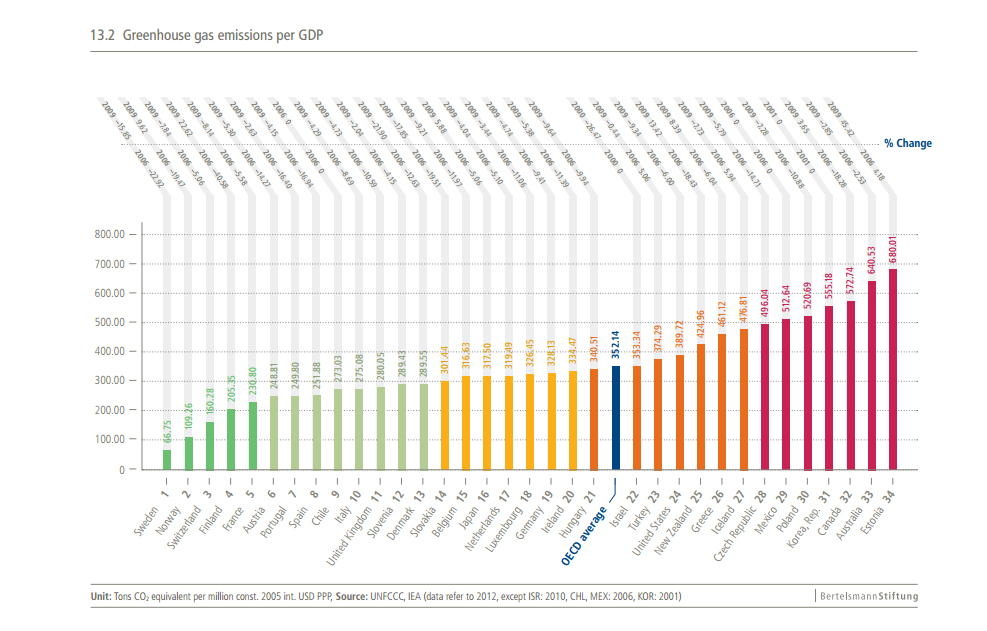

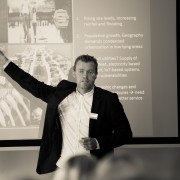
#SDG4 QUALITY EDUCATION
Time to take global responsibility on sustainable development.
Has your university / college signed up to this scheme?
Can you help and send them an hint!
“This Accord calls upon we, the world’s universities and colleges to embed the Sustainable Development Goals into our education, research, leadership, operations, administration and engagement activities”
#GETBEHINDTHESDGs #Climatedots #GlobalGoals
www.sdgaccord.org
Everything is inter-connected
What is sustainability? It is changing all the time.
The global SDGs are at the moment the leading scheme for sustainability.
To a greener, leaner and healthier community.
Localisation of the SDGs in cities and towns are part of the #Agenda2030 – 17 goals and 169 targets
Not many #cities and towns are at the same level of resilience, @uclg_org network can mobilise to support ten years of new strategy on Making Cities Resilient #MCR2030 and help localise the #SendaiFramework @wuf10 #WUF10 UN-Habitat (United Nations Human Settlements Programme)